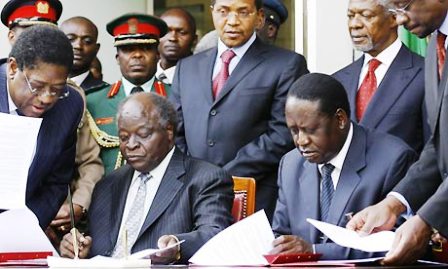Kenya Government
All you need to know about Kenya government and its history.Kenya was a British colony and became an independent country on 12 December 1963.
One of the greatest African leaders, Mzee Jomo Kenyatta, the first president, was the main figure behind the struggle for freedom. Mzee Jomo Kenyatta was also a writer and authored a famous book called Facing Mount Kenya.
Kenya has the following presidents and prime ministers since its independence:
•Jomo Kenyatta who became president in 1964 and governed to his death in 1978.
•Daniel Arap Moi, who took over as second president in 1978 and governed to 2002.
•Mwai Kibaki who was elected third president in 2002.
•Mwai Kibaki continued as president in 2007 together with elected Prime Minister Raila Odinga.
In Kenya, the president, prime minister, vice president and cabinet have executive powers. Kenyans elect their president and prime minister, who in turn appoints a vice president and their cabinet.
Elections for the presidency are held every five years. The parliament in Kenya is responsible for law making and management of the government finances made possible through Kenyan taxpayer monies, returns from public investments and income from Kenya's natural resources.
Form of Government
The Kenya government is structured as a republic, meaning that there are no hereditary political positions, but the representatives are chosen by the people.
Kenya has a representative form of government: the people themselves to not directly vote on changes in law or policy, except in isolated cases such as the constitutional referendum in 2005.
The President
The country is led by an elected president who is both the head of state and head of government, much like the presidential role in the United States.
The president of Kenya is elected by popular vote (though irregularities and fraud have played in role in most elections), and must also be an elected member of parliament
The president chooses his cabinet from among the members of the legislative National Assembly. The president, vice-president and cabinet make up the executive branch of the Kenya government.
The Legislature
The other component of the system is the legislative branch, where laws and policy are created. In Kenya, this is made up of a parliament called the National Assembly.
There are 224 members of the Assembly, with 210 of them being elected by their constituencies. The remaining seats are appointed directly by their political parties.
Local Administration
Beneath these central government bodies, there are a number of smaller divisions for day-to-day management of political affairs. The 8 provinces are broken down into 69 districts, each led by an appointed commissioner.
The districts are further divided into divisions. The district structure is currently under review and may be further split to create another 37 new districts.
Kenya Political Parties
After the violent elections in December 2007, much of the Kenyan government is changing. There are a number of new and re-organized political parties in the legislature.
The party that holds the majority of parliamentary seats is the Orange Democratic Movement, the Party of National Unity, the Orange Democratic Movement – Kenya and the Kenya African National Union.
With new power-sharing agreements being made, the government makeup is far from settled. Since 2005, many parties have split, regrouped and restructured themselves making the political climate pretty confusing.
Other Pages of Interest
Kenya Hotel Forum |
Jobs in Kenya |
Kenya in Africa |
Kenya Business |
Kenya Coffee |
Kenya Deals |
Kenya Entertainment Centres and Clubs |
Kenya Events |
Kenya Flag Meaning |
Frequently asked questions About Kenya |
Kenya Medical Health Services |
Kenya Police |
Kenya Population |
Kenya Real Estate Management |
Kenya Recipes Forum |
Kenya Revenue Authority |
Recent Articles
-
Garam Masala Appetizers ,How to Make Garam Masala,Kenya Cuisines
Sep 21, 14 03:38 PM
Garam Masala Appetizers are originally Indian food but of recent, many Kenyans use it. Therefore, on this site, we will guide you on how to make it easily. -
The Details of the Baruuli-Banyara People and their Culture in Uganda
Sep 03, 14 12:32 AM
The Baruuli-Banyala are a people of Central Uganda who generally live near the Nile River-Lake Kyoga basin. -
Guide to Nubi People and their Culture in Kenya and Uganda
Sep 03, 14 12:24 AM
The Nubians consist of seven non-Arab Muslim tribes which originated in the Nubia region, an area between Aswan in southern








New! Comments
Have your say about what you just read! Leave me a comment in the box below.